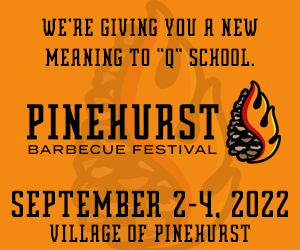Golf course superintendents are a savvy lot, often able to adapt to the ever-changing variables that weather creates on course conditions.
Even on the topic of winterkill, they are able to explain how and why it happens, but the mystery lies in when it will happen.
“That’s the magical question,” said Tim Kreger, the executive director of the Carolinas Golf Course Superintendents Association. “It seems to happen like every 20 years. So weather cycles have a lot to do with it, but it’s still Mother Nature and there is nothing guys can do.”
Winterkill is the result of an unseasonable mix of snow, ice and periods of below-average temperatures following a stretch of warmer temperatures that spark warm-season grasses to begin coming out of winter dormancy. The worst affected parts of a course are typically the shaded and high-traffic areas, along with north-facing slopes.
“This is the worst weather injury that I have seen in my career and I’ve been in the business since starting at Duke in 1994,” said Brian Green, director of golf course maintenance at North Carolina State’s Lonnie Poole Golf Course. “And you have to go back to ’94 to get anything close to this.”
In the Triangle, the week of Feb. 16-22 was the first of a two-punch attack on turfgrass. That week delivered an average high and low of 35 and 18 degrees, respectively. For a few days the mercury didn’t get beyond the low 20s and there was consecutive lows of 11 degrees and 7 degrees, according to Green, who tracks such things in his notebook.
“Then we had 22 degrees on March 29,” he said. “That grass was waking up then and that low of 22 degrees on areas that was already damaged … that probably finished it off.”
And because the predominant Bermudagrass tends to lose its coloring and growing characteristics during the winter months, the winterkill is not easily noticed until the affected grass fails to respond to spring’s warmer temperatures.
While winterkill is typically an annual occurrence, the severity varies.
The best analogy would be to hurricane season. Each year, North Carolina weathers the prime August through October months with little to no damage. Occasionally, though, the Tar Heel state gets hammered by a horrific hurricane whose name becomes indelible — Hazel, Floyd and Fran come to mind.
“The problem was the timing,” said Michael Shoun, director of agronomy for McConnell Golf, which owns or operates 11 private courses across the Carolinas, including Raleigh Country Club, TPC Wakefield Plantation and Treyburn north of Durham.
The damage created by winterkill is not only to the physical course, but to the financial pocketbook of course owners. In addition to the cost of having to either sprig or sod the damaged turf, there is also the loss of revenue from having to close the course.
McConnell Golf will spend upward of $250,000 to repair the five courses that were most affected. The estimated cost of sod runs between $8,000 to $10,000 per acre, while sprigs cost $2,500 per acre.
Shoun said the most damaged course in the McConnell Golf stable was Sedgefield’s Dye Course in Greensboro. He estimated that about 20 acres were being addressed, while other courses suffered about 1-2 acres of damaged turfgrass.
Green placed the number of affected acres at Lonnie Poole at 5 acres, but that only 2 acres would need to be re-grassed. He added that the worst winterkill was in areas that were sodded late last year as part of the course’s bunker renovation project. “We lost some of that grass, especially in our collars,” he said.
In addition to courses, sod producers were affected by the winterkill. The North Carolina Sod Producers Association lists 38 growers producing eight species of grasses ranging from cooler season (Bluegrass, for example) to warmer season (St. Augustinegrass and Zoysiagrass).
Since most sod is produced in direct sunlight, the winterkill affects were not as substantial, but they were enough to cause some delays in meeting the demands from courses. That, in turn, created a slight increase in costs.
What makes North Carolina somewhat unique is that the state is located in a transitional weather zone, which means courses can actually have a mixture of cooler and warmer season grasses. Most Triangle area courses incorporate Bermudagrass on the majority of its courses, but also use a cooler climate Tall Fescue for its less maintained areas.
As a frame of reference, Chambers Bay Golf Course, site of this year’s U.S. Open and located in the often wet and cool Pacific Northwest, uses Fescue, a cooler weather grass, exclusively on its property.
Kreger says short of covering fairways in similar fashion to how some courses protect their greens — a practice that Shoun says is a “physical and financial impossibility” — there is little to nothing that will prevent winterkill at its worst.
A common best practice is raising the height of fairway mowing from a half-inch to three-quarter-inch in height starting in the early fall. Improving surface and reducing the stress in high traffic areas are considerations, along with fertilizing with potash, which promotes stress resistance in turfgrass. Another possibility is the removing or thinning tree canopies to improve sunlight penetration to shaded areas.
In the end, it all comes down to Mother Nature.

















